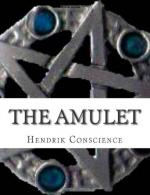At this period two great events occurred, by which a new channel was opened to trade: Christopher Columbus discovered America, and Vasco de Gama, by doubling the Cape of Good Hope, pointed out a new route to India. This latter discovery, by presenting another grand highway to the world, deprived Venice of the peculiar advantages of her situation, and obliged commerce to seek a new emporium. Portugal and Spain were the most powerful nations on sea; countless ships left their ports for the two Indies, and brought back spices, pearls, and the precious metals for distribution throughout the Old World. This commercial activity required an emporium in the centre of Europe, halfway between the North and the South, whither Spaniards, Portuguese, and Italians, as well as French, English, Germans, Swedes, and Russians, could resort with equal facility as to a perpetual mart for all the commodities exchanged between the Old and the New World.[1]
A few years before the commencement of the religious wars which proved so disastrous to the country, Antwerp was in a most flourishing condition. Thousands of ships of every form and size covered its broad river like a forest of masts, whose many-colored flags indicated the presence of traders from all the commercial nations of the globe.
Portuguese gallions carried thither the gems and spices of the East; Spanish gallions the gold and silver of America; Italian vessels were laden with the delicate fruits and rich stuffs of the Southern countries; German vessels with grains and metals; and all returned to their own countries heavily freighted with other merchandise, and made way for the ships which were continually arriving, and which, according to contemporary chronicles, were often obliged to wait six weeks before they succeeded in approaching the wharf.[2]
Small craft, such as hers, ascended the Scheldt, and even ventured out to sea in order to trade with the neighboring people. Transportation into the interior of the country was effected by means of very strong wagons, several hundred of which daily left Antwerp. The heavy vehicles which conveyed merchandise through Cologne to the heart of Germany were called Hessenwagens.[3]
This extraordinary activity induced many foreigners to establish themselves in a city where gold was so abundant, and where every one might reasonably hope for large profits.
At the period of which we speak, Antwerp counted among its inhabitants nearly a thousand merchants from other countries, each of whom had his own attendants; one chronicle estimates, perhaps with some exaggeration, the number of strangers engaged in commerce at five thousand.[4]
Twice a day these merchants met on Change, not only for purposes of trade and for information of the arrival of ships, but principally for banking operations.
To convey an idea of the amount of wealth at the disposal of the houses of Antwerp, it suffices to say that the king of Portugal obtained in one day in this city a loan of three millions of gold crowns, and Queen Mary of England contracted a debt of seventy millions of francs.




